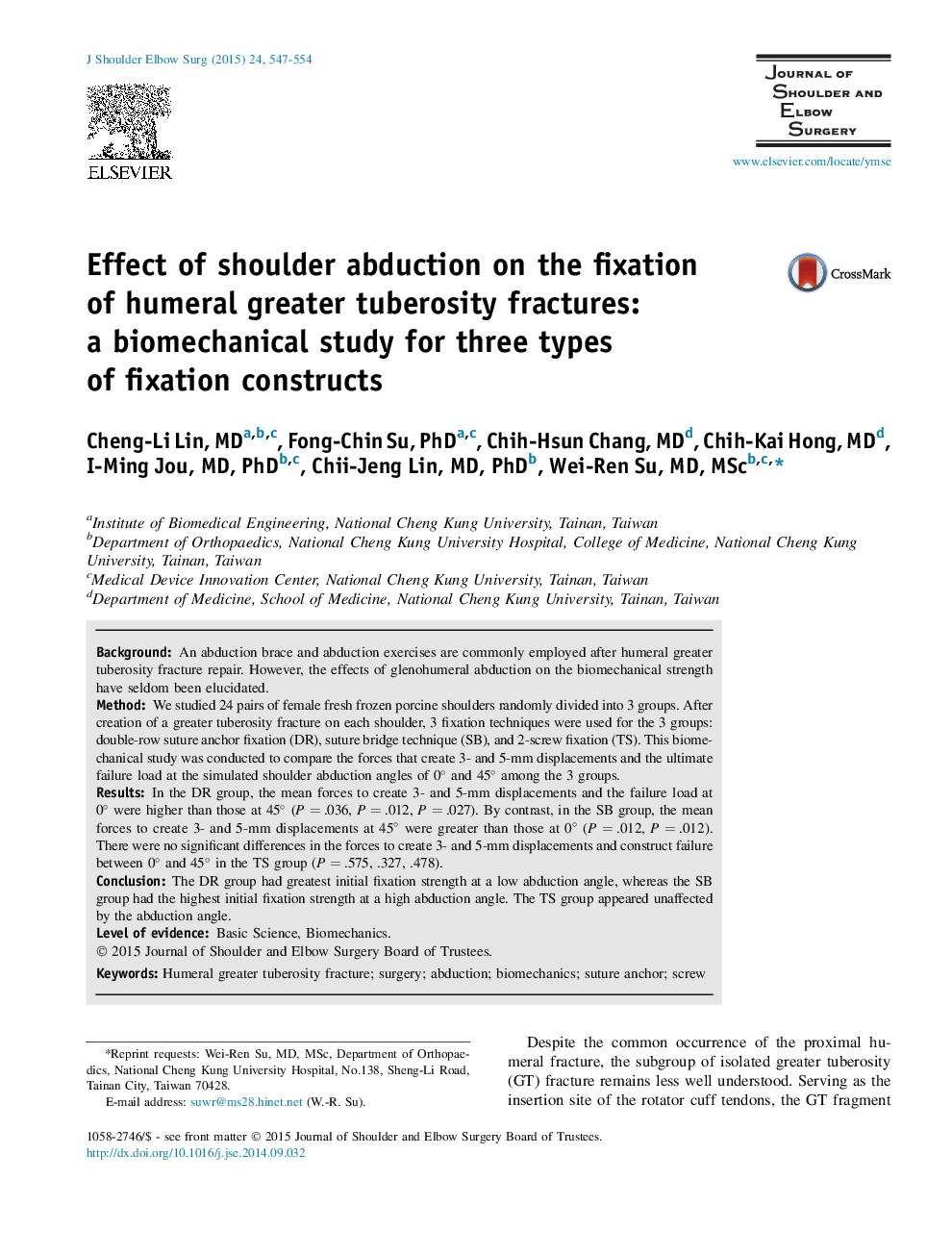| Article ID | Journal | Published Year | Pages | File Type |
|---|---|---|---|---|
| 4073319 | Journal of Shoulder and Elbow Surgery | 2015 | 8 Pages |
BackgroundAn abduction brace and abduction exercises are commonly employed after humeral greater tuberosity fracture repair. However, the effects of glenohumeral abduction on the biomechanical strength have seldom been elucidated.MethodWe studied 24 pairs of female fresh frozen porcine shoulders randomly divided into 3 groups. After creation of a greater tuberosity fracture on each shoulder, 3 fixation techniques were used for the 3 groups: double-row suture anchor fixation (DR), suture bridge technique (SB), and 2-screw fixation (TS). This biomechanical study was conducted to compare the forces that create 3- and 5-mm displacements and the ultimate failure load at the simulated shoulder abduction angles of 0° and 45° among the 3 groups.ResultsIn the DR group, the mean forces to create 3- and 5-mm displacements and the failure load at 0° were higher than those at 45° (P = .036, P = .012, P = .027). By contrast, in the SB group, the mean forces to create 3- and 5-mm displacements at 45° were greater than those at 0° (P = .012, P = .012). There were no significant differences in the forces to create 3- and 5-mm displacements and construct failure between 0° and 45° in the TS group (P = .575, .327, .478).ConclusionThe DR group had greatest initial fixation strength at a low abduction angle, whereas the SB group had the highest initial fixation strength at a high abduction angle. The TS group appeared unaffected by the abduction angle.
